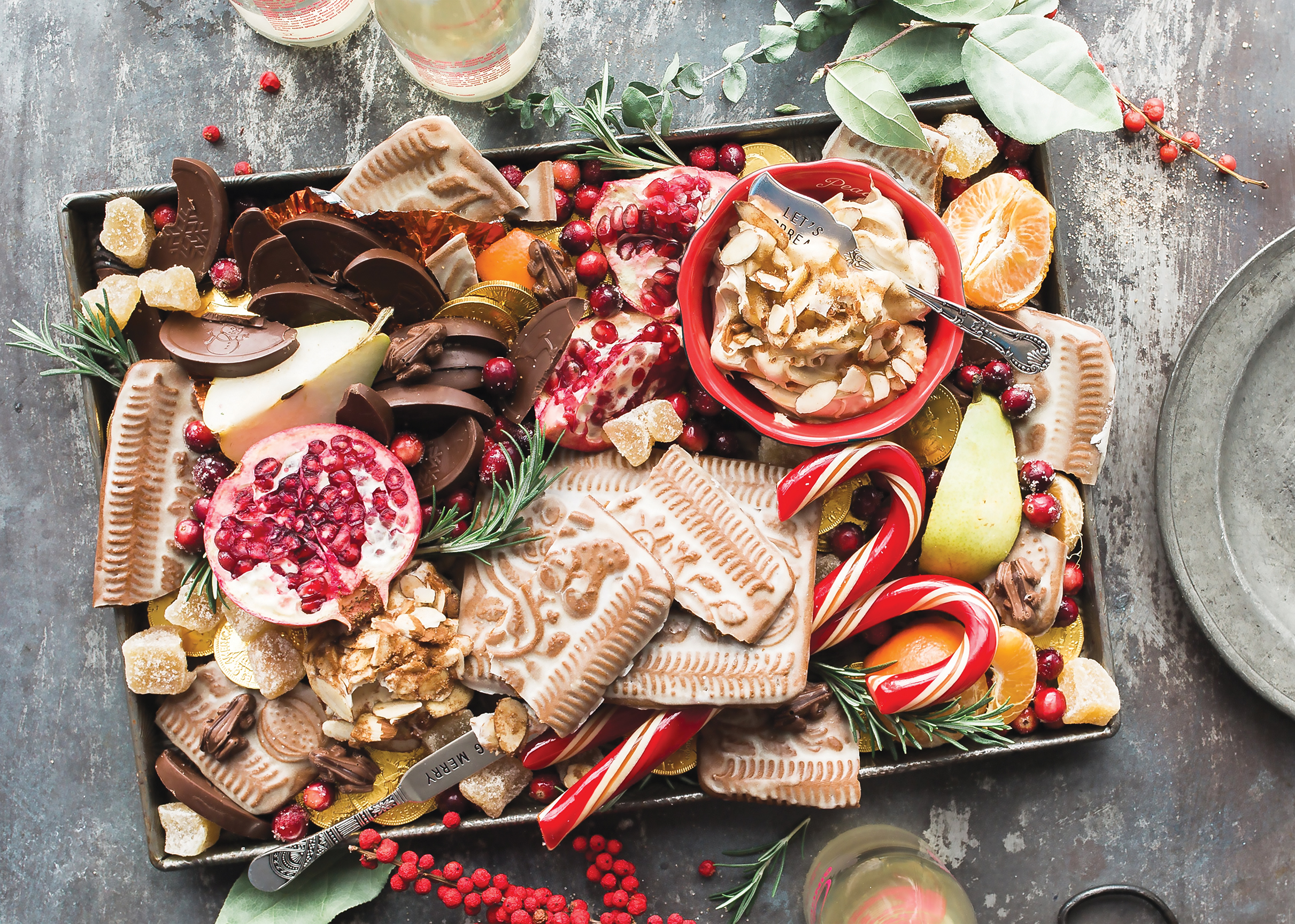Christmas Around the World
Christmastime is a season recognized around the globe – in wintertime in the Northern Hemisphere, in summertime in the Southern Hemisphere. It is observed in different ways by different people: For some, it is a religious holiday; for others, it is a time to gather with family and friends; and for others still, it is a time for shopping, gift-giving, and dinner dates. Some of us at the Gwangju News started life out believing that Christmas was the time of year that Santa Claus came flying through the sky with a sleigh and reindeer, slid down the chimney at night, and placed gifts under a decorated pine tree in the living room and in stockings of only good girls and boys. For this Christmas article, the Gwangju News asked 28 individuals in our diverse international community how Christmas is observed in their home countries. — Ed.
Taiwan
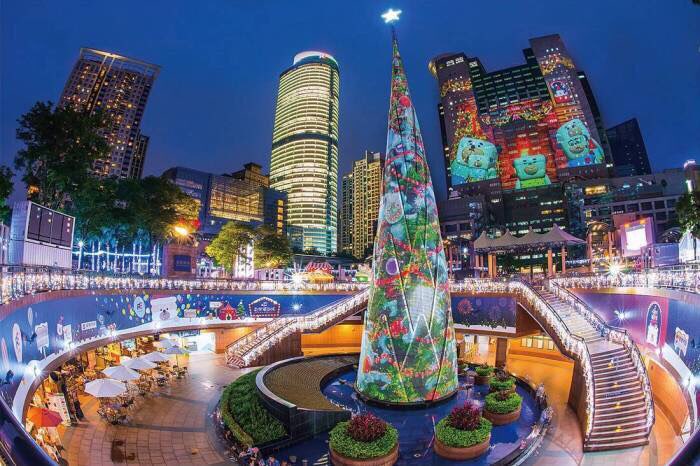
Christmas is not a national holiday in Taiwan; however, almost all of the Taiwanese children know about Santa and do gift exchanges or hang out with family or friends on Christmas Eve. Before Christmas, every large department store has a special Christmas sale and every shop sells Christmas items, such as big Christmas trees, Santa decorations, and Christmas cards. You can also get a festive feeling by visiting “Christmasland in New Taipei City,” which is one of the largest Christmas Festival events in Taiwan. — Yi-wen Gong, Taoyuan, Taiwan
Romania
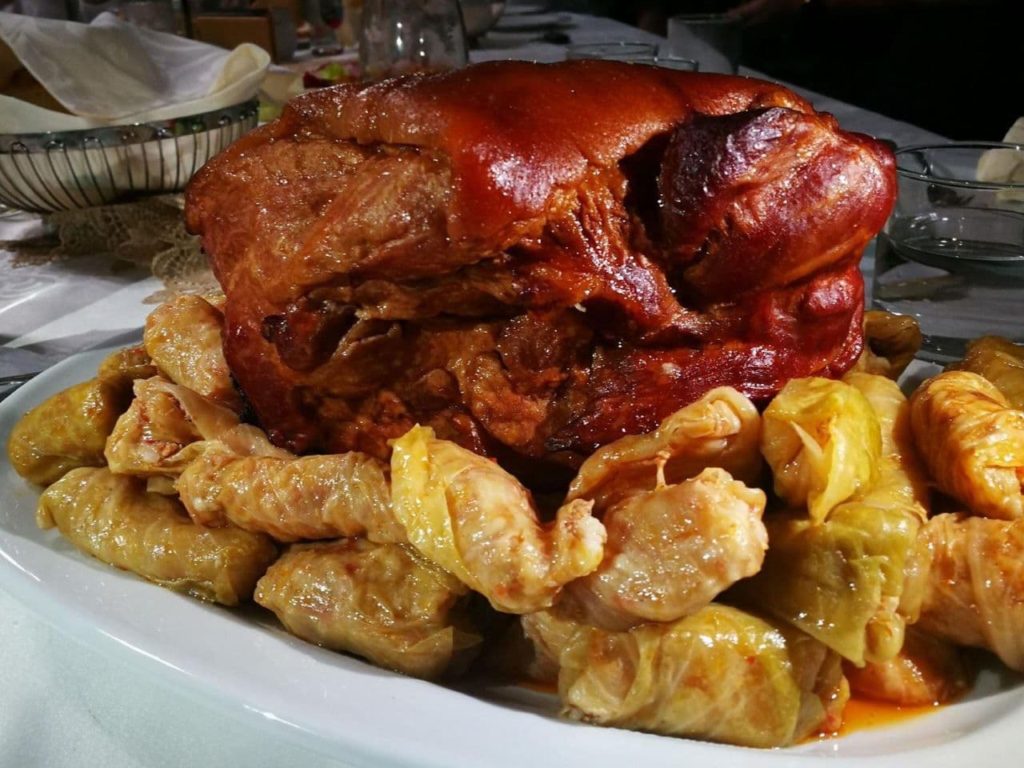
Christmas in Romania is a one-month long celebration starting on December 1 – when the Christmas lights are lit all over the country – and ending on January 8, on Saint John’s Day. Even if we are Orthodox, we celebrate Christmas on December 25, rather than on January 7, as do many other adherents to the Orthodox Church in Southeast Europe. Popular among children, Saint Nicholas is celebrated on December 6 with great fanfare and lots of gifts. On the eve of Saint Nicholas’ Day, all children clean their boots, place them at the door (or window), and go to sleep waiting for “Mos Nicolae” to fill them with presents. In the morning, the most obedient of them will discover lots of little surprises, mostly sweets, tucked into their shoes, while the naughty ones will only find a symbolic rod (actually, no one gets the rod these days).
One particular aspect of Christmas in Romania is related to the pig sacrifice, since pork is the main ingredient in all the traditional dishes. Each household in the countryside sacrifices a pig on Ignat Day (St. Ignatius, December 20) to prepare all the delicacies necessary for the Christmas Day celebration. The day of the sacrifice starts early in the morning with the killing itself and continues with a series of proceedings through which all the meat is carefully prepared. Food is probably the main part of any holiday in Romania, but Christmas is a true feast for the senses. With the slaughtering of the pig, a good portion of the meat is turned into smoked ham, bacon, sausages, liver sausage, pig’s trotter, and other delicious Romanian dishes such as sarmale (delicious meat-and-rice rolls wrapped in cabbage/sauerkraut, served with polenta, hot pepper, and sour cream), cozonac (a sort of sponge cake with nuts, cocoa, and Turkish delights) and, of course, mulled wine. — Melline Galani, Bucharest, Romania
USA – Pennsylvania
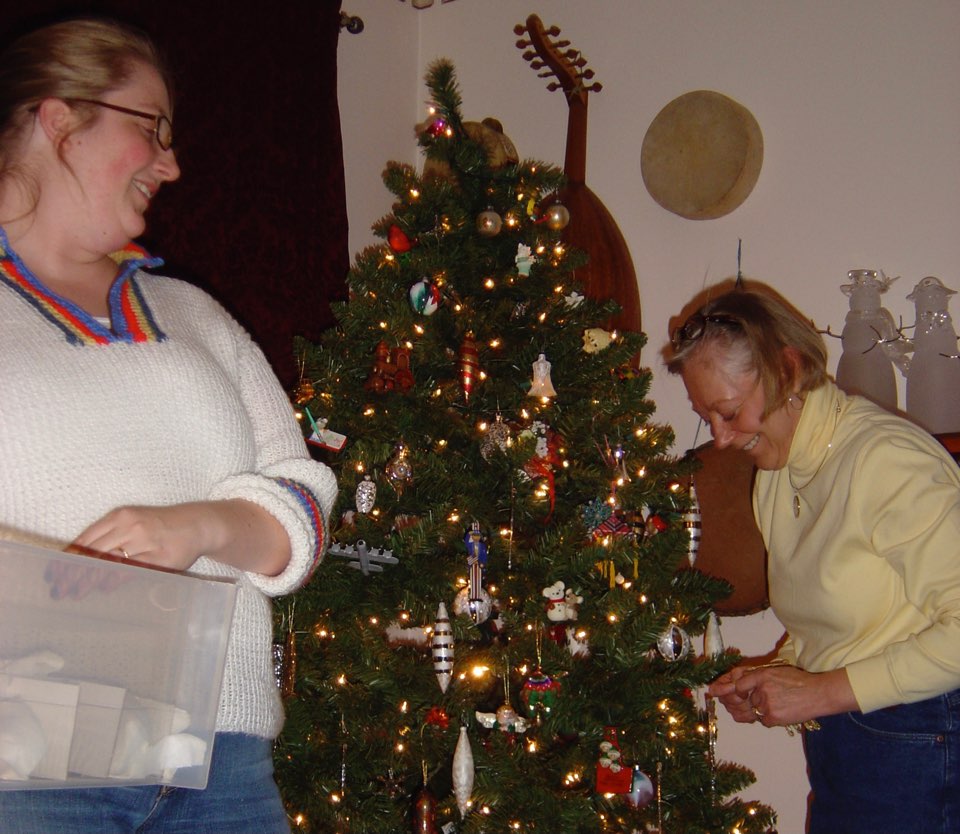
As a first-generation American, Christmas in my house when I was growing up was a very interesting time. It certainly looked nothing like any American Christmas movie I had ever seen. When I was a child, it meant getting to Philadelphia to my maternal grandparents’ home in time for the Christmas Eve German church service. During the service, Santa Claus would stop by and fill the Christmas stockings. When we would get home from services, family and friends from the area would pass through and share stories, laughter, gifts, and joy. No one was turned away. Dinner was buffet style with foods that did not require a table to eat. (For example, meatballs or sausage and peppers steeping in slow cookers and cold sandwich fixings.)
Kids would fall asleep watching the shadows on the ceiling cast by the Christmas pyramid. As the twinkle from the candles on the tree would flicker until they would almost burn to nothing. Christmas music, mostly in German, would play quietly in the background, and laughter filled the evening. Looking back, the memories carry a holiday filled with joy, fellowship, warmth, and love. It was not very religious, and many of the friends that stopped by were other than Christian. At the Meissgeier home, Christmas Eve was about friendship and family and sharing. — Christina Bleeker, Philadelphia, Pennsilvania
Indonesia
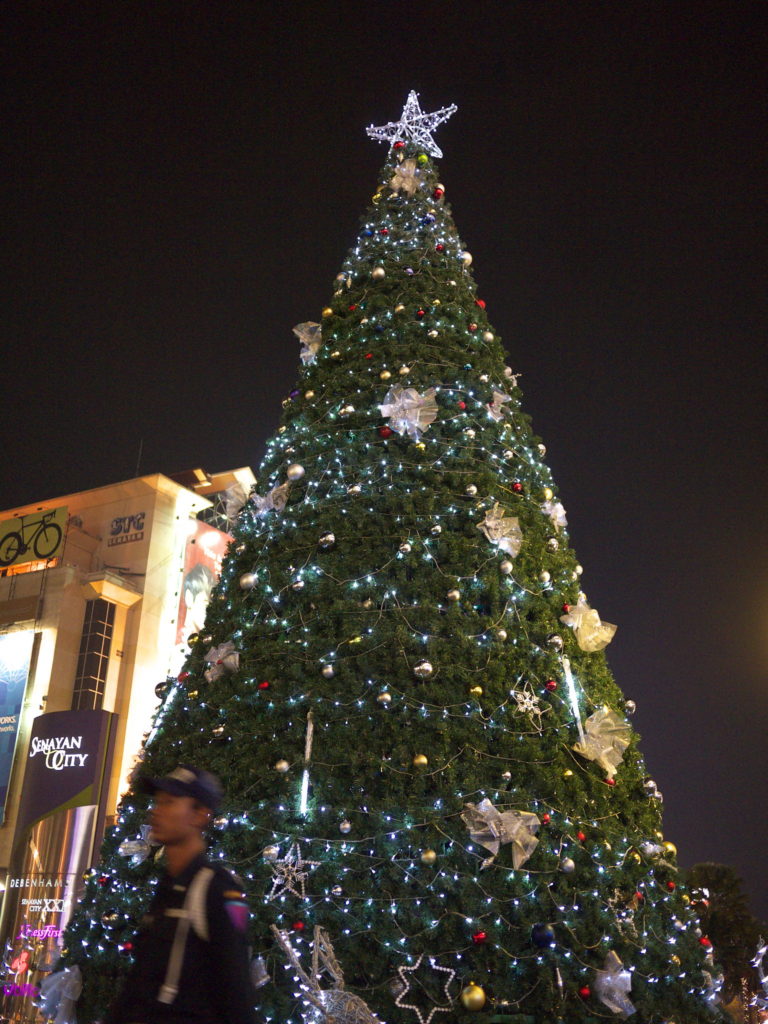
More than 80 percent of the population in Indonesia is Muslim. But December 25 is a national holiday, so department stores and public places are decorated in the Christmas spirit. Because we do not have a winter season, we put cotton on our Christmas trees to make them look like they are covered with snow. — Emmanuela Sabatini, Jakarta, Indonesia
Belgium
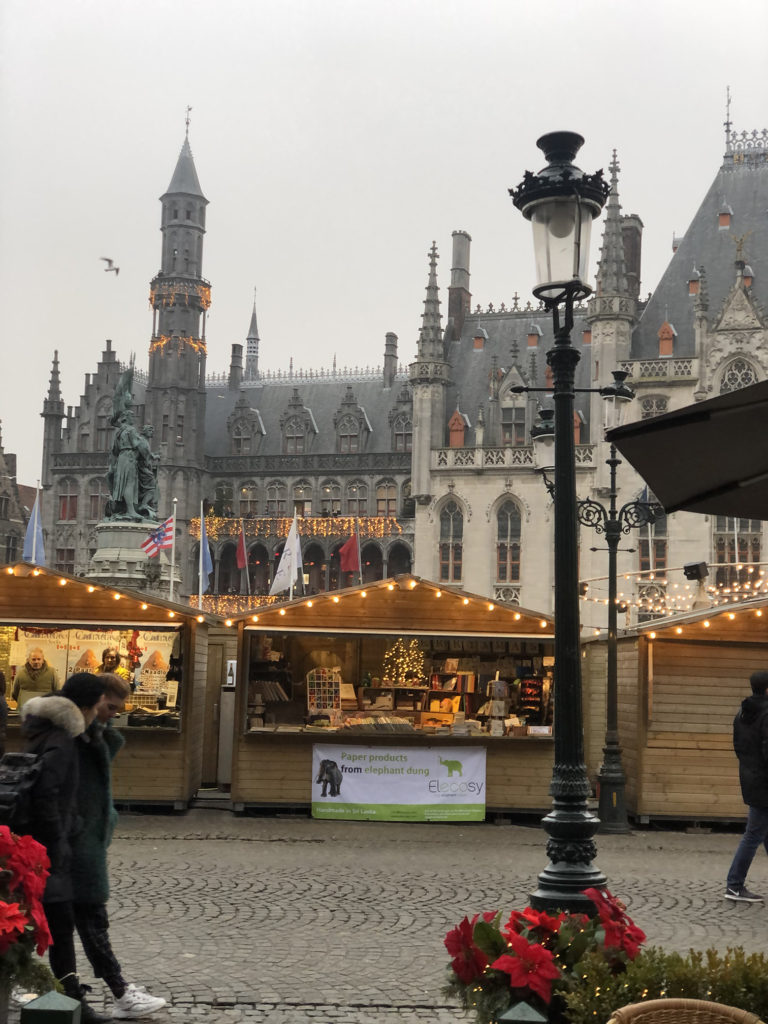
The Christmas season is the one period where all major cities in Belgium light up. Christmas markets in the form of little villages with over 200 wooden chalets selling mulled wine, hot chocolate, waffles, and festive ornaments occupy the market square. The ice rink set in the center of the market is the highlight for the young, while the parents enjoy the festive ambience. The Grande Place comes to life at night, when the giant Christmas tree is lit up, and the sound-and-light show displayed on the city hall leaves spectators in awe. The nativity scene is always present (along with sheep!) to keep with tradition. — Aline Verduyin, Grimbergen, Belgium
Uzbekistan
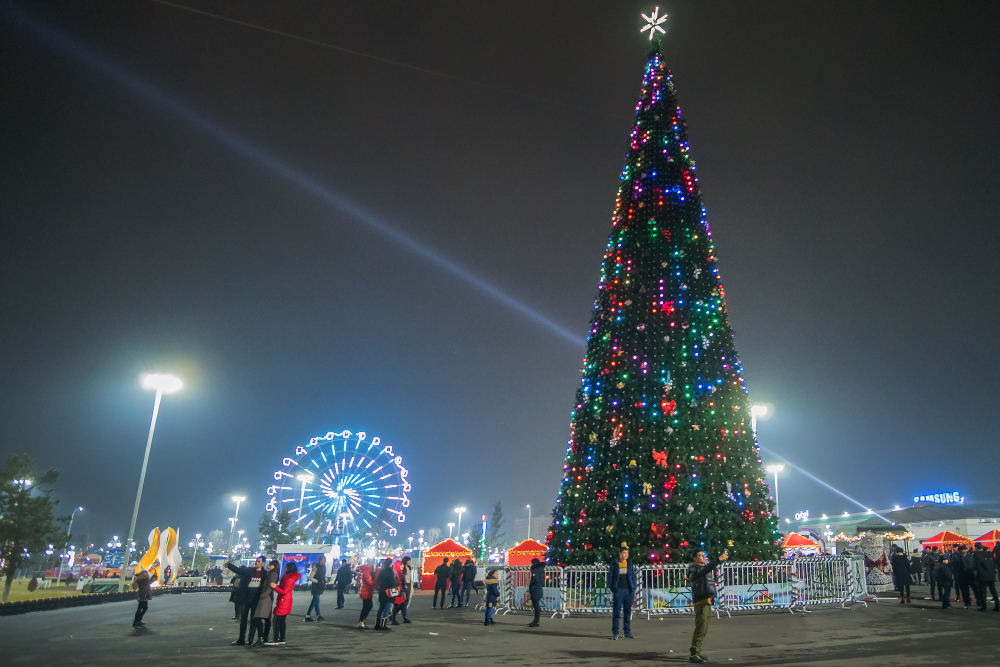
For most Uzbeks, Christmas has no religious content and its celebrations blend with those of the New Year. Christmas symbols and decorations like those found in Europe or the U.S. adorn the streets of Uzbekistan’s main cities, including the capital Tashkent, but for most people, Christmas, which the Orthodox celebrate on January 7, is just part of the New Year celebrations. Around Christmas, you can encounter people who are dressed as Santa, and kids take pictures with them, exchanging gifts as well. — Baha Komilov, Fergana, Uzbekistan
USA – Midwest

Christmas in the American Midwest is, at least for my family, always a special time on the day of and in the lead-up to Christmas. Like most families, we usually bought a Christmas tree shortly after Thanksgiving in late November. That weekend, we would all get together to decorate the tree, which my mother was always meticulous about. My father would decorate the outside of the house with Christmas lights around this time, and actually won a local award one year for this.
On Christmas Eve, during the day everybody is usually running around. My father and/or my siblings and I typically have to do a bit of last-minute shopping. That night, we usually get visits from relatives on my mother’s side of the family, typically my grandfather, grandmother, and my aunt. We have a big dinner and afterwards go to the late night mass at our local church. Late Christmas Eve and Christmas morning were always agony when we were young because we did not get our gifts until the morning of the 25th, and my parents would lay out our gifts like Santa had come and arranged them just so, no wrapping. After a bit of play, we would eat a deluxe breakfast prepared by my mother, then unwrap gifts from relatives and stuff we had bought for one another. So, early morning on the 25th was always magic, especially when we were young. For the rest of the week leading up to New Year’s, we typically have a big get-together with all the relatives on my father’s side of the family somewhere around or in Chicago, which was also very fun because we had a lot of cousins and uncles around to play games and create mischief. And then it would be Happy New Year once again, and it would all be over. — Daniel Springer, Midwest, USA
Kyrgyzstan
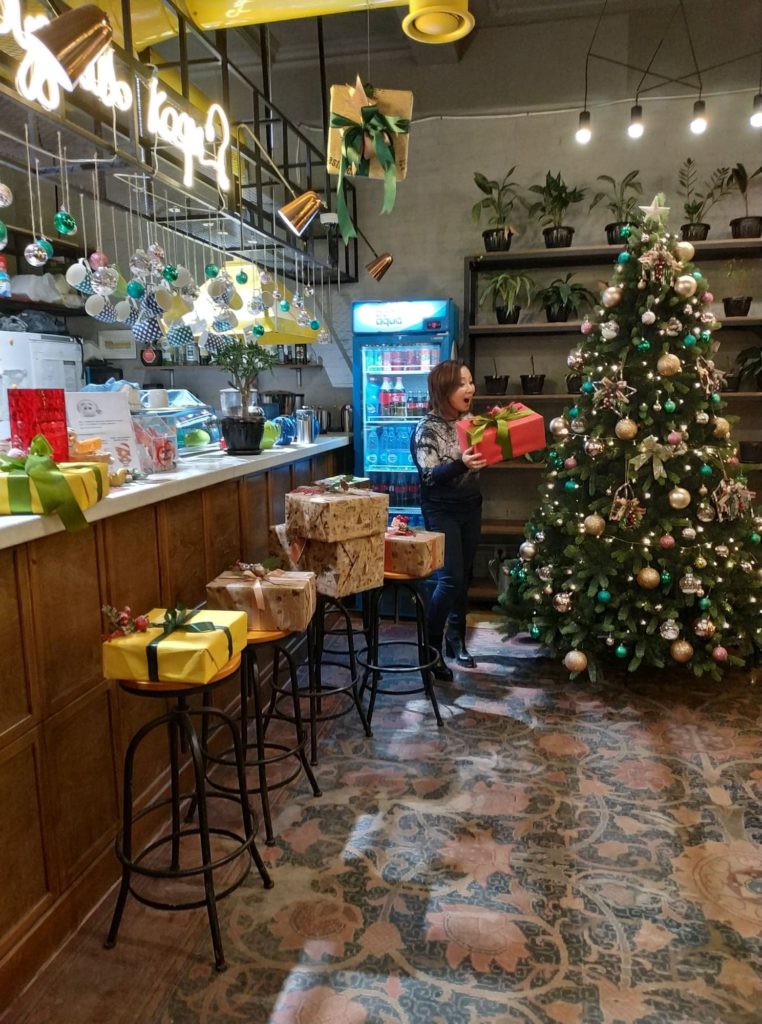
Most people in Kyrgyzstan are Muslims, but they still celebrate Christmas. However, half of the country’s Christians are Orthodox and celebrate Christmas after the old-rite, on January 7. We decorate the streets and Christmas trees. Restaurants have special menus and entertainment. It is a great chance to spend time with family and friends! — Elena Pan, Bishkek, Kyrgyzstan
Australia

Christmas in Australia is in the middle of our summer holidays. Since we are a country of indigenous peoples and immigrants, Christmas is different for everyone. Most areas have a “Carols by Candlelight” event leading up to Christmas, where people bring picnics to the park and sing carols. My family holds onto a lot of European traditions, like Christmas trees, a big family luncheon, and plum pudding! But we also start Christmas Day with a play on the beach (in fact, in my hometown, Santa sails onto the beach on a boat and hands out lollies to children on Christmas morning!). Our lunch is a spread of turkey, ham, and seafood salads to suit the climate. Many people have outdoor barbecues, and picnics, and the beach is always popular! Beach cricket, anyone? — Elizabeth Tedge, Victoria, Australia
Russia

In Russia, we celebrate Christmas on January 7 due to our Orthodox origins. For many Russians, Christmas is a strictly religious holiday, while the most important day of the year is New Year’s. According to the Russian Orthodox Church tradition, believers are supposed to visit a church and stay there all night long praying; however, most Russians do not celebrate Christmas this way anymore. Instead, most of the families watch a nightlong vigil on TV and have a festive dinner together. For many regions of Russia, Christmas is the darkest time of the year, with the sun setting at about 3–4 p.m. That is why it is a tradition to illuminate the streets brightly. Also, another tradition is fortune-telling on Christmas Eve. Even though it has deep pagan roots, the tradition is still loved by many Russians. — Aleksandra Mikhailova, Saint Petersburg, Russia
Canada – Alberta
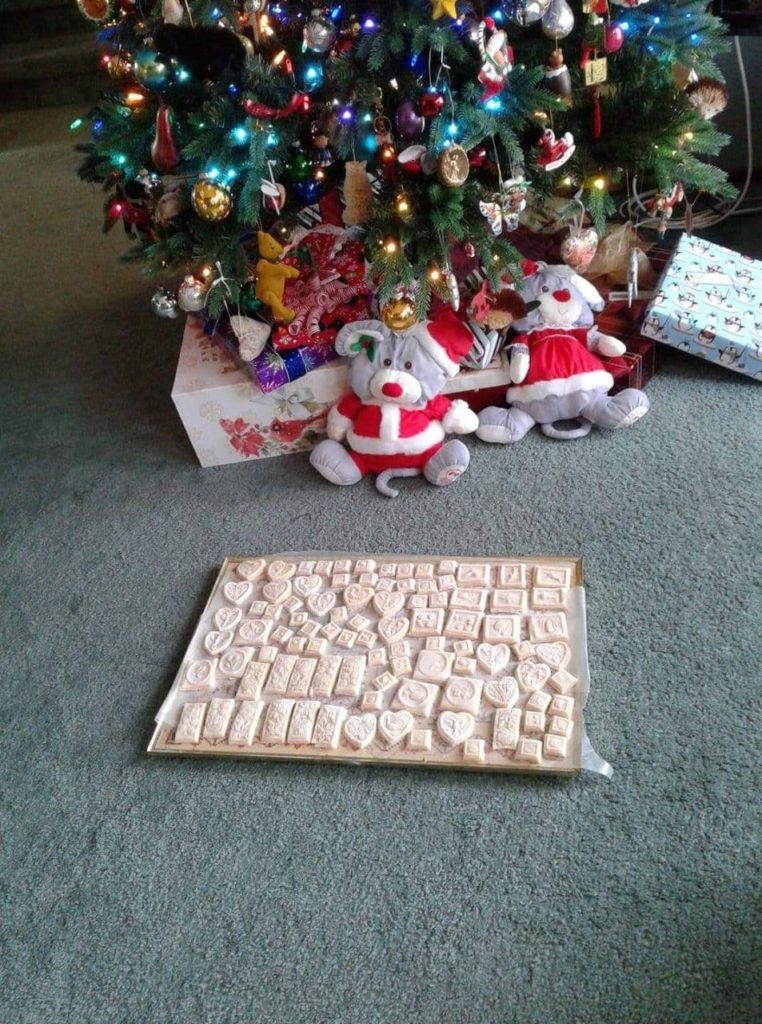
In Western Canada, a white Christmas is not guaranteed, but there is a good chance of one. Early evenings and freezing temperatures mean we like to stay inside, maybe warming up by baking cookies that we will later eat with some hot chocolate or eggnog while admiring the Christmas tree. Presents are a big part of the holiday, as are the days off from school, but it is the time with family that many are thankful for. Christmas memories like singing songs together and enjoying a delicious turkey at dinner mean a lot more when you cannot make it back for the holiday. — Arlo Matisz, Medicine Hat, Alberta, Canada
Belarus
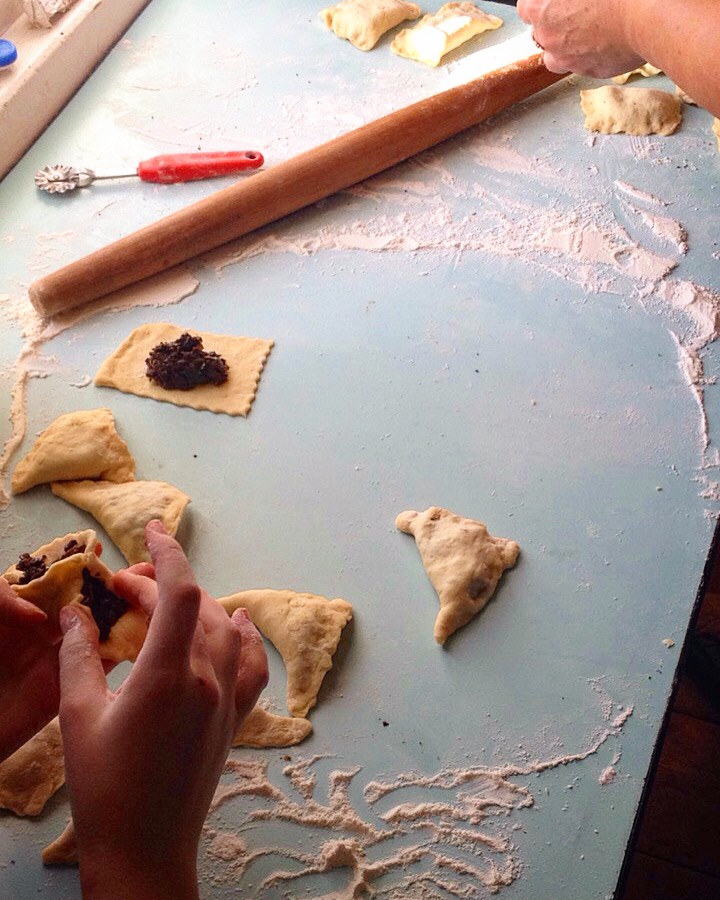
There are two main denominations in Belarus – Christian Orthodox and Roman Catholicism. Orthodox believers celebrate Christmas on January 7 based on the Julian Calendar, whereas Catholics celebrate Christmas on December 25 as per the Gregorian Calendar. The way my Catholic family celebrates Christmas in western Belarus is as a family holiday. The main Christmas celebrations start on December 24. Customs for “Kućcia,” or Christmas Eve, are similar to those in neighboring countries. Christmas Eve dinner, also known as “Wigilia,” starts when the first star appears in the sky. Bits of hay are spread beneath the tablecloth as a reminder that Christ was born in a manger. One old tradition states that when one removes a piece of straw from under the tablecloth, its length indicates one’s luck for the coming year.
Traditionally, the Christmas Eve dinner is served without meat and consists of at least 12 fish, mushroom, and vegetable dishes. The number twelve signifies the Twelve Apostles. During the meal, all of the guests should taste a bit of everything, all 12 dishes. The Christmas Eve supper may last for a couple of hours. After the dinner is eaten, the table remains as it is so that the ancestral spirits may partake of the meal at night.
Caroling, or “Kaliadavanne” in Belarussian, is also a part of Belarus Christmas traditions. Groups of dressed-up people move from house to house, singing Kaliady songs. The head of the house visited during Kaliadavanne is supposed to treat the group with money or snacks and sweets. But what about Santa and gifts? In Belarus, kids wait for “Svyaty Mikalaj” (Saint Nicolas) and find presents under the pillow or Christmas tree in the morning on December 25. — Viktoryia Shylkouskaya, Lida, Belarus
USA – Georgia
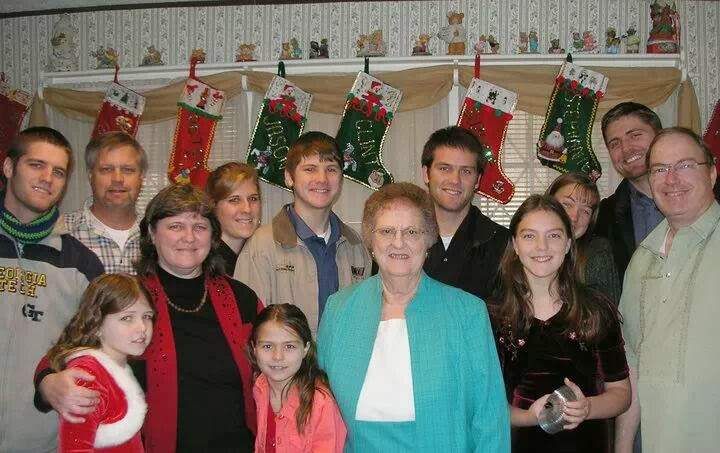
Christmas is a little different for every family all over the USA. For my family, we enjoy coming together to eat a large meal, share stories, and exchange gifts. The holiday itself is a spiritual celebration of the birth of our savior Jesus Christ, who was born of the Virgin, Mary, and sent by God to die for everyone’s sins. We celebrate His gift by giving each other gifts, singing Christmas songs of worship, and attending church as a family to thank God for His love and provision. Like most holidays, Christmas is a chance to see family, feast, and celebrate life. For every family, it is a little different, but just as important to them all is being surrounded by loved ones and taking a moment to thank God for His many blessings. This is what my family strives for every Christmas celebration. — Stephanie Carney, Woodland, Georgia
Armenia
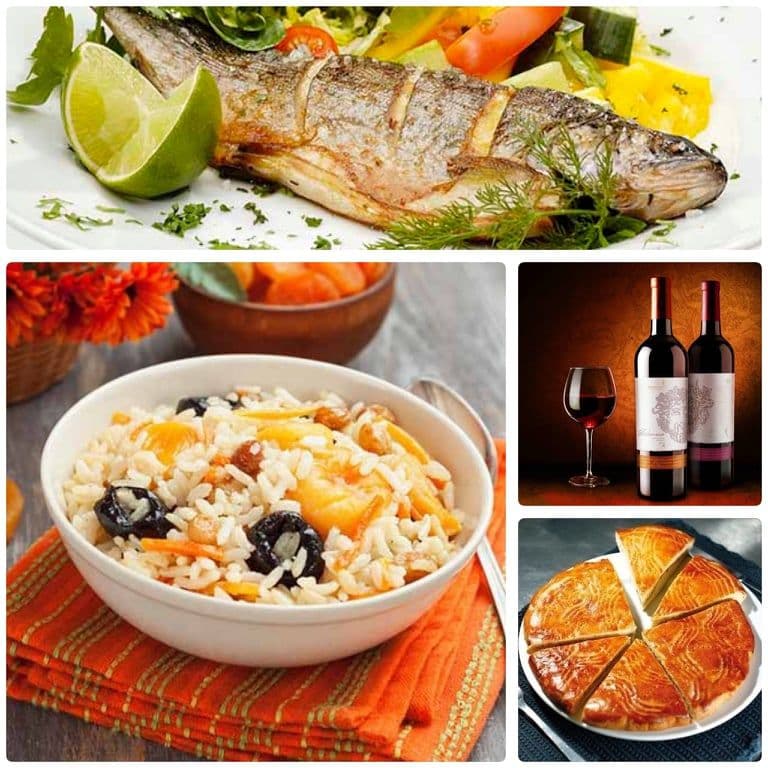
Many people are surprised by the fact that Armenians celebrate Christmas on January 6. Until the 4th century, all Christian churches celebrated Christmas on January 6. There are some stories about the reason for this, and one of the most common ones is related to a festival dedicated to the sun god. There was a Roman festival called “Solis Invicti” that was celebrated on December 25. Thus, many churches decided to move Christmas to December 25 to prevent people from celebrating the pagan festival. However, Armenia did not have such a solstice tradition – that is why the date was not moved and they kept on celebrating Christmas on January 6.
Usually, the celebration starts on Christmas Eve, January 5. Many people go to church not only on Christmas Day but also on Christmas Eve, and then come home with candles. On this day, Armenians usually greet each other with “Christ was born and revealed,” and the reply is “Blessed is the Revelation of Christ,” and “It is great news for you and for us!” People usually celebrate Christmas with their family. Armenians prepare traditional meals for this day. The main dish is rice with raisins, fish, and also wine. Despite the date difference, Christmas is a happy family holiday that everyone enjoys. — Christina Ghevondian, Yerevan, Armenia
Serbia
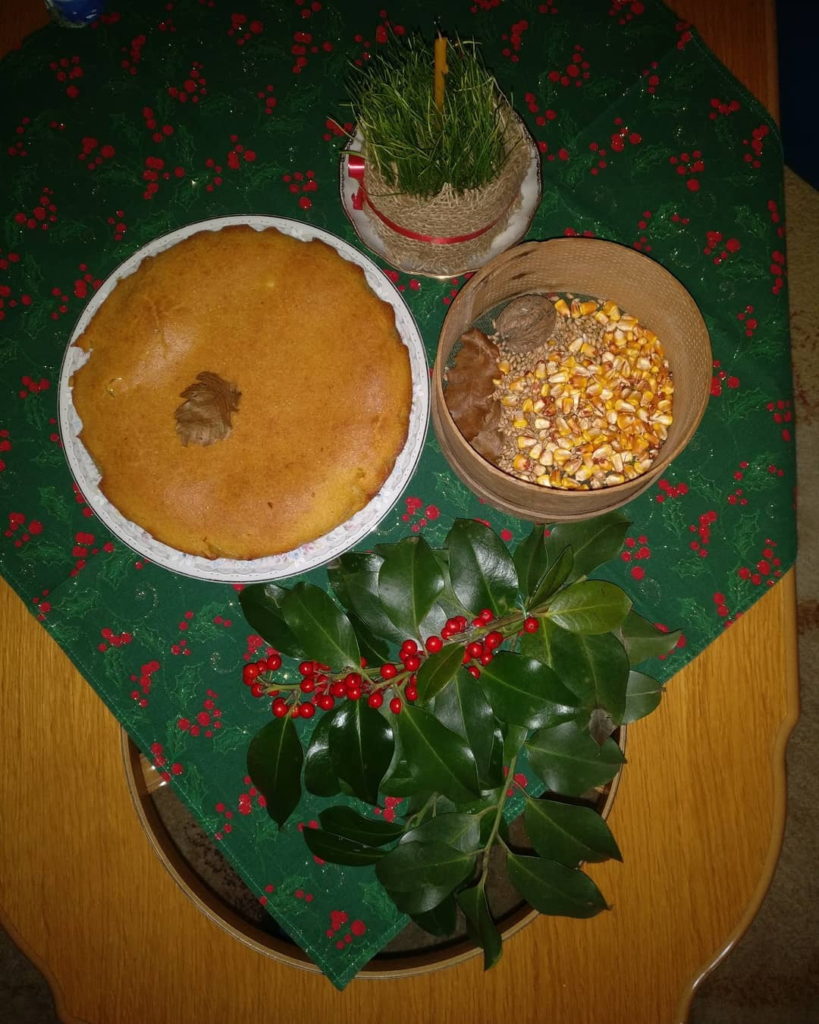
Similar to Koreans celebrating holidays by the lunar calendar, in Serbia, we celebrate holidays following the old church calendar (Julian Calendar), since we belong to the Orthodox Christian Church. Therefore, our Christmas Day is on January 7. Christmas in Serbia is most like Korea’s Chuseok holiday – it is the time of the year when we go back to our parents’ homes, feast, and celebrate only with our family while following many unique traditions. On Christmas morning, we bake traditional bread – česnica. Česnica is a round bread eaten only at Christmas. Before the bread is baked, the woman of the house places as many tiny “gifts” in the dough as there are members of the family, for example – a penny that symbolizes money, corn that symbolizes success at school, wheat that symbolizes success at work, and dried herbs that symbolize health. Before the Christmas feast, the whole family prays together, holds the round bread, slowly rotates it sideways three times, and breaks it so that every member gets one piece. In each piece, a family member finds their “gift” that represents what their next year will be like. If you find the penny, you will be rich (this person is considered the luckiest!). Find the corn and you will be good at school, while finding wheat will make you successful at work – and if you find the herbs, you will always be in good health. — Jana Milosavljevic, Belgrade, Serbia
Hong Kong

Strongly influenced by British culture, Christmas is considered one of the most important festivals in Hong Kong. If you get a chance to visit Hong Kong in December, you will definitely be surprised by how much the people love Christmas. You will see vivid lights and shiny ornaments across the skyscrapers, and extravagant installations and displays in the shopping malls. The festive vibes seem to take over the entire city in the winter season. Since Christmas Day and the weekday after (December 25 and 26) are both public holidays in Hong Kong, people also tend to utilize their free time to attend winterfests, go Christmas shopping, and enjoy fine dining with their loved ones. — Chloe Chan, Hong Kong
Greece

Greek Christmas is full of local celebrations, traditions, and of course, must be spent with family and friends. Lots of regions use Christmas trees as decorations, but little sail boats were first decorated before trees appeared from abroad. In the olden days, the wives and children of sailors would craft decorative boats themselves during the holiday period. Santa Claus is Saint Basil (Agios Vasilis), but he does not visit homes on December 25, he arrives a week later, on New Year’s Day, when we traditionally exchange the Christmas presents. And we always choose someone to enter the house first, usually the one who seems to be the one with the most good fortune. — Babis Tsilivigkos, Athens, Greece
South Korea

The way Koreans spend Christmas is a bit different from Americans. Since most Koreans live in apartments, few people decorate the outside of their homes or have a Christmas tree inside. However, churches, shopping malls, and streets are lit up during the season. Young Koreans spend Christmas Day with their partners, while Americans spend the day with their families. You can easily find a lot of couples downtown on that day, making it somehow similar to Valentine’s Day. Well, even I spent last Christmas with my girlfriend in America. – Lee Woo-seob, Gwangju, South Korea
The Netherlands
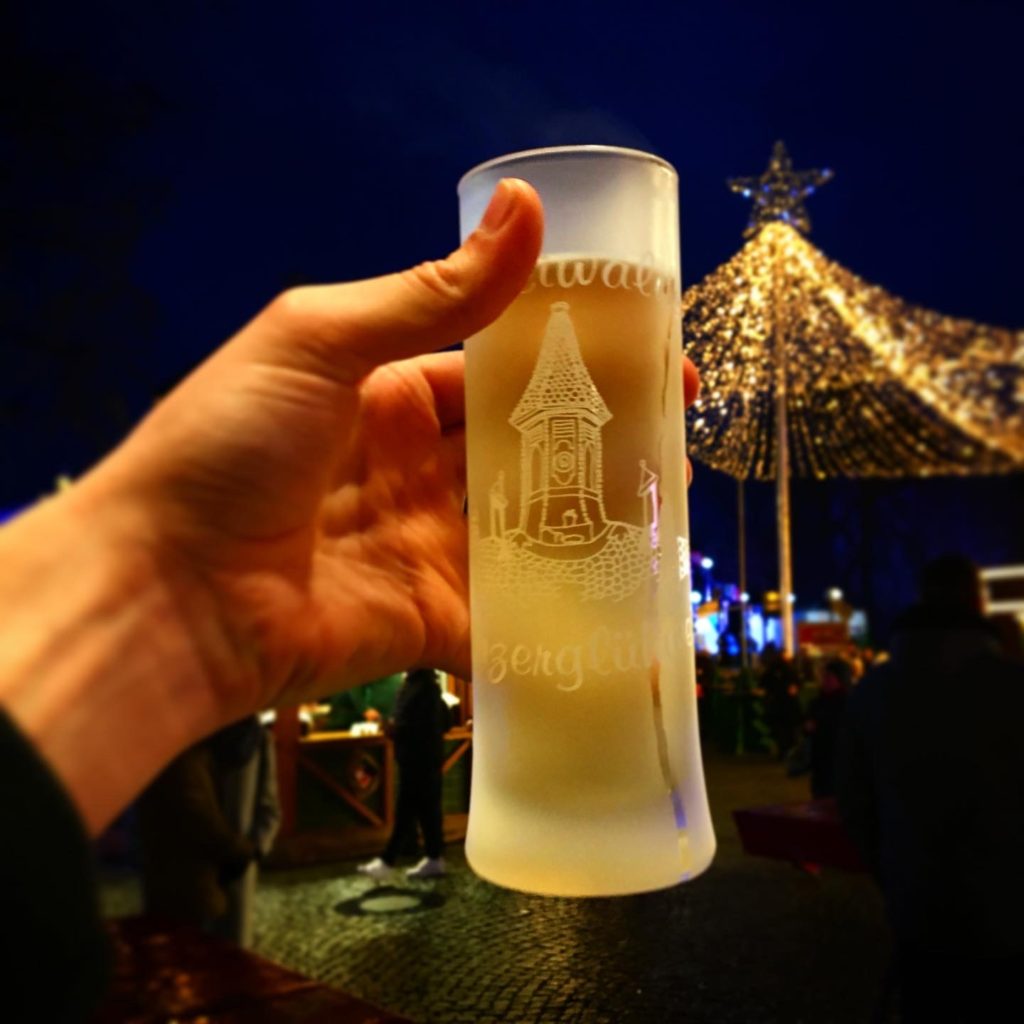
In the Netherlands, December 25 and 26 (the second Christmas) are two national holidays, and children get two weeks off from school. Christmas is a family holiday. Our family would go to grandma’s place on Christmas Eve to have a big Christmas dinner with all the relatives. We do not give each other presents on Christmas today. That is reserved for December 5th, Saint Nicolas’ Day. Saint Nicolas (Sinterklaas, for Dutch speakers) really looks like Santa, but I suspect Santa looks more like him, as the Americans just mixed “Sinterklaas” (Santa Claus) with Christmas in 18th-century New York. — Thomas Adriaenssens, Kortgene, The Netherlands
Mexico

There are many special traditions surrounding Christmas in Mexico. Some of these originated in Spain, and others developed due to Mexico’s particular history. The festivities surrounding Christmas last through much of the month of December, but in fact, the Christmas season isn’t truly over until February 2.
Three of the most important Christmas traditions in Mexico are nacimientos, Christmas posadas, and pastorelas. The nacimiento nativiety scene is set up on December 16, the Baby Jesus is added on Christmas Eve, and the three Wise Men are added on January 6. The posadas (processions) take place over the nine days prior to Christmas as re-enactments of Mary and Joseph’s search for a place to spend the night in Bethelem. Similarly, the pastorelas represent the shepherds’’ journeys to see the Baby Jesus. In the pastorelas, the shepherds encounter various obstacles on their journey, with devils and angels making appearances, trying to convince the shepherds of the way they should take. — Elisabet Ramirez, Queretaro, Mexico
Scotland
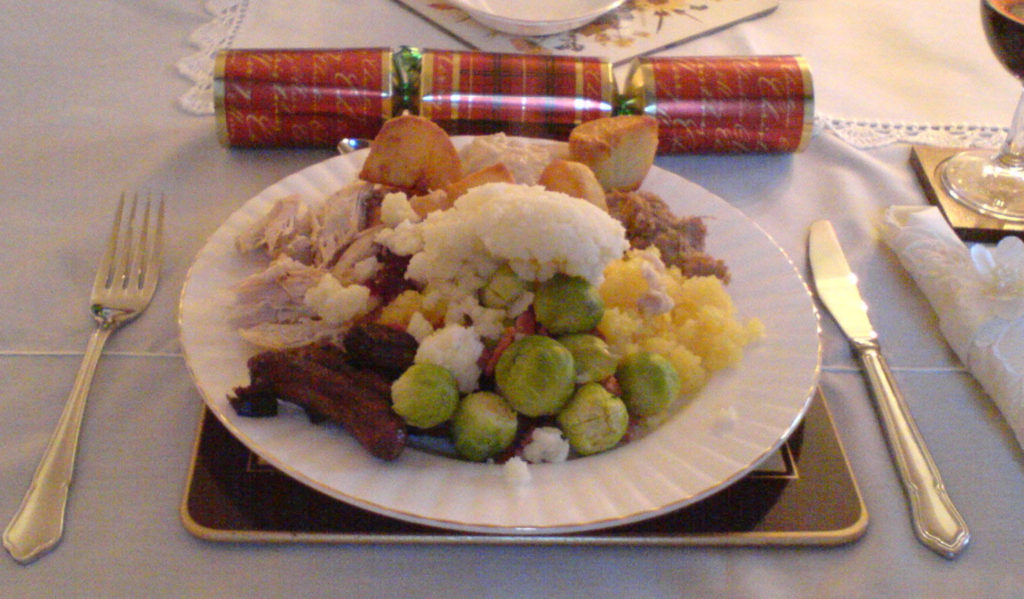
Christmas always seemed to be snowy in my mind, though I believe it was probably mostly wet and cold. Christmas really started when the tree, a real one, was went up. Parents also put up other decorations, too. Also, the writing and receiving of Christmas cards played an important part. My mother made sausage rolls, mince pies, Christmas cake, and Christmas pudding, so December had a house full of glorious smells.
Christmas Eve was nine lessons and carols at church before going home and eagerly awaiting gifts from Santa and trying to sleep. Christmas Day consisted of waking early, being forced to eat some breakfast, then dressing in our best clothes before being allowed to open the main presents. Around 11:00 a.m., we would go to a neighbor’s house for the community spirit and finger foods. Normally, we were back home by 1:00 p.m. for a three-course Christmas dinner, most of which had been cooking while we were out. After washing up, we would play board games and then open small presents and have an evening meal. Then, we would go to bed feeling stuffed and contented. Boxing Day, December 26, was a special family day when we would usually go over to my dad’s parents’ home around lunchtime and spend the day with his side of the family. I always remember the build up to Christmas being exciting, a feeling of wonder, and a special feeling in the crisp fresh air. — Jonty Trelfer, Drumnadrochit, Scotland
Ecuador

For Ecuadorians, December is the Friday of the year. This is a month where we celebrate Christmas every weekend with your friends from school, college, or work. It is a great time to see friends whom we have not seen for a long time.
Ecuadorians are very Catholic. For this reason, on December 24, we go to church with our families. We have dinner at home, eat turkey, and have hot cocoa. We wait for Santa Claus at 12:00 midnight. Every kid writes a letter to the Baby Jesus, but everybody knows that Santa is the courier. — Cinthya Torres, Guayaquil, Ecuador
Canada – Vancouver
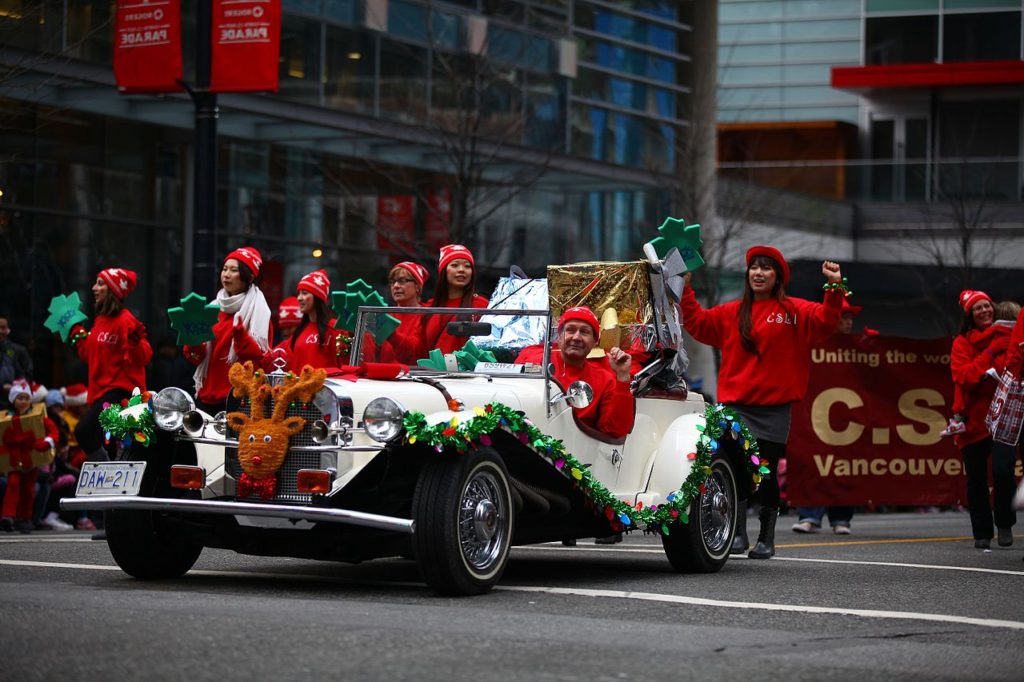
Vancouver does not get as much snow as the rest of Canada, but we still celebrate Christmas in a big way. There is the Santa Claus Parade, Christmas Market, Grouse Mountain Christmas Village, Christmas concerts, and so many houses around the city that are decked out with lights and decorations. Every winter, people enjoy the Christmas music, shopping, delicious foods, or just spending time with their families and friends. And of course, we enjoy doing winter sports like skiing, snowboarding, and hockey. — Kevin Patton, Vancouver, Canada
Denmark
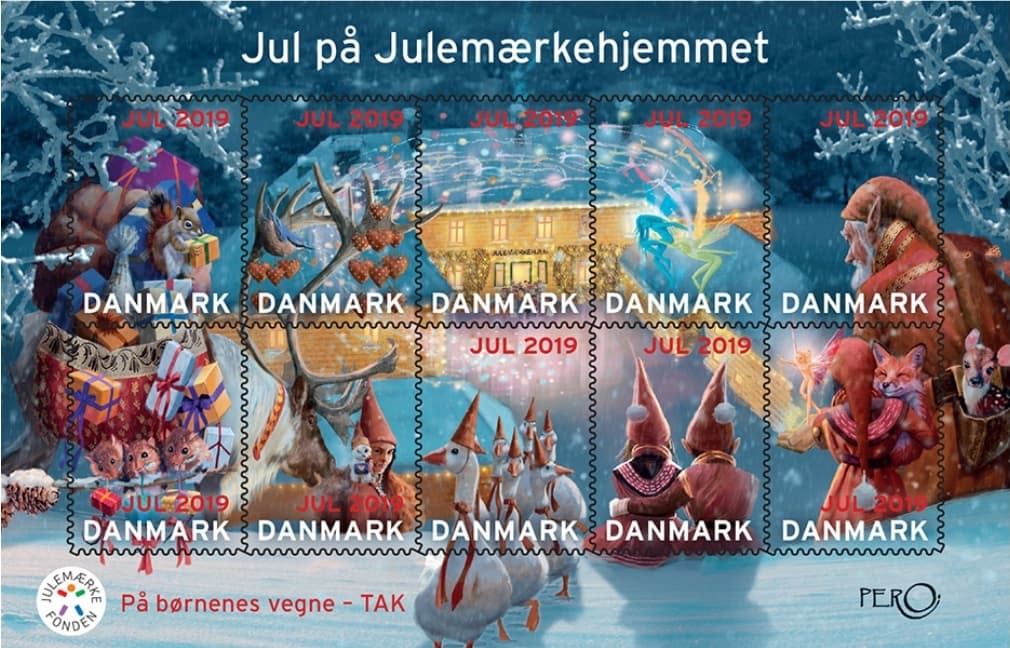
Christmas in Denmark means Christmas trees, decorations, homemade Christmas sweets and cookies, and family dinner on the evening of the 24th. We have a special Christmas dessert that we eat on Christmas evening, a sort of pudding with chopped almonds inside. One whole almond is hidden inside it, and whoever gets it receives an extra present. We have special Christmas stamps for sending Christmas cards to friends and family, and the profit from the sales goes to helping children in need. It is always very important to be the one who gets to put the star on top of the Christmas tree because he or she gets a special Christmas treat for doing the job. Our kids used to take turns doing it. Next time, we will have a real tree and my husband will not have to lift them anymore. Of course, there should be lots of presents underneath the Christmas tree. — Pia Jensen, Tange, Denmark
Canada – Ontario
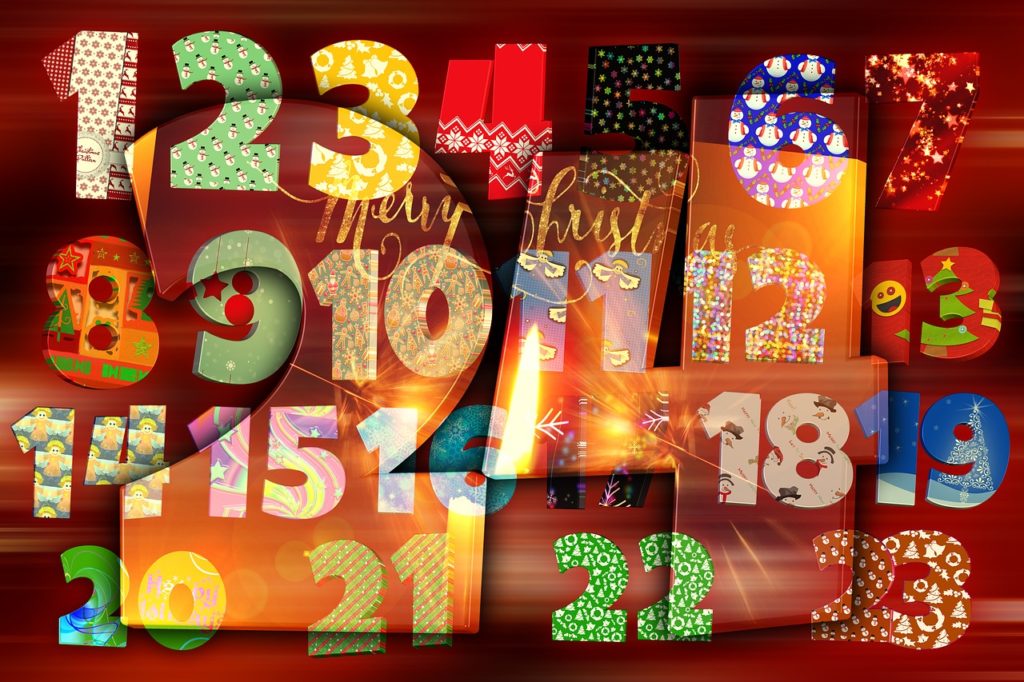
Christmas in Ontario revolves around traditions that change from family to family. In my own, each Christmas was like the chocolates in an advent calendar, different but similar enough. Some years, we would join with other neighborhood families to line the roadside for our city’s Santa Claus parade, enjoying free hot chocolate and candy canes while waiting for Santa’s motorcade to wind its way to us.
Other years, my father and uncles would pour their souls into building uneven ice rinks in our backyards, more mindful of the bumps in the ice than those it caused us kids. Hosting family, usually grandparents from far in the country, was a role traded between the families – same as hosting the annual Christmas gathering, which is the only family reunion you could set a watch by. My favorite Christmas tradition was leaving a carrot out for Santa’s reindeer. As a child, the animal-lover inside me cherished this. As an adult, I loved knowing my father had to gnaw up all those carrots for us to find Christmas morning. One year, I left out a dozen carrots. He was sick all day. Merry Christmas! — Brad Andrews, Oshawa, Ontario, Canada
Vietnam

The Christmas holiday in Vietnam is a great opportunity to dress up and go out with friends and partners. Various retail outlets and entertainment facitities in big cities invest in festive decorations and majestic performances. In Hanoi, families and groups of friends tend to congregate in the shopping malls, areas near Hoan Kiem Lake, and St. Joseph’s Cathedral. In Ho Chi Minh City, people gather in the Western Union Bui Vien and the Christian neighborhoods in District 8. — Nong Thi Nghi Phuong (Fiona), Thai Nguyen, Vietnam
Switzerland
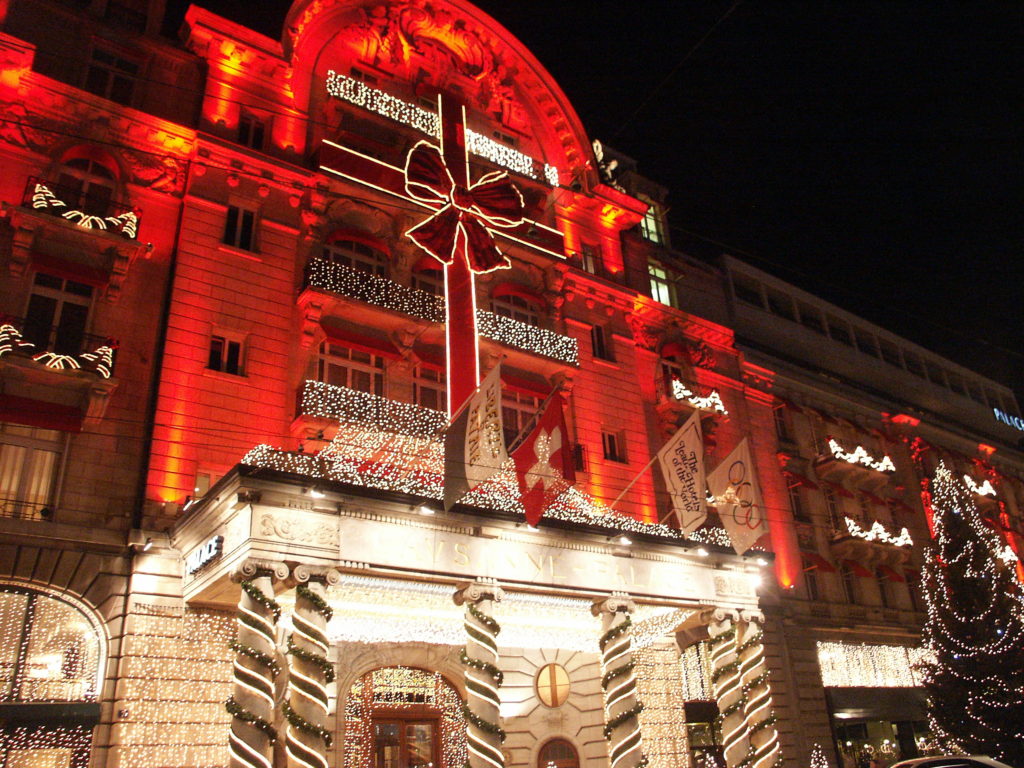
The Christmas season in Lausanne begins with beautiful lights illuminating all of its streets. A few days after these beautiful decorations go up, we all know that the Christmas market will appear with its warm (mulled) wine and the roasted chestnuts, where we can always warm our cold hands. You can visit the whole city under the starry sky with its Christmas markets, and share some wine with your newly found or old friends. During the day, you can enjoy the pleasure of buying gifts for your loved ones and taste some Swiss chocolate. You can also enjoy some live music and street artists. Ideally, you finish your day in the balcony of the Beaurivage Palace Hotel with a glass of Swiss red wine admiring the silver reflection of the moon on the lake. — Lila Miehlbradt, Lausanne, Switzerland
Estonia
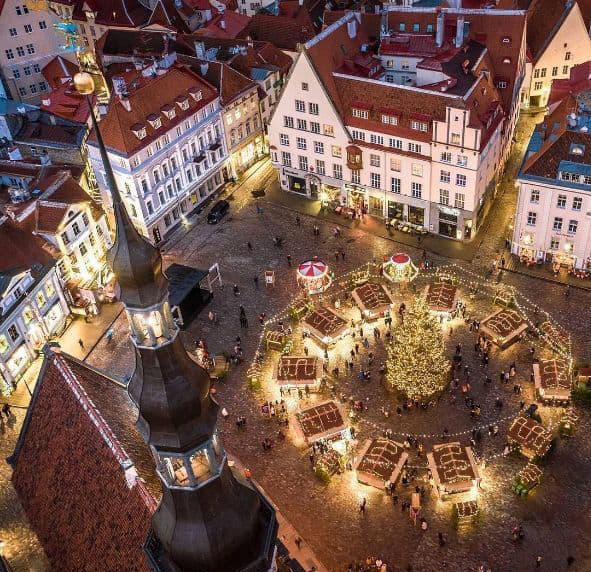
Just as in other countries in Northern Europe, Medieval Estonians were celebrating the Jul by dancing around a big fir tree in the dark, winter solstice night. You have to thank them for coming up with the idea of having lights decorating your Christmas tree. Nowadays, Tallinn takes pride in winning for two consecutive years the Best European Christmas Market award. As for Christmas traditions, Estonians eat blood sausage, pickled cabbage with cranberry jam sauce, and drink warm wine on Christmas Eve. — Cata Lee, Tallinn, Estonia
Compiled by Melline Galani.





